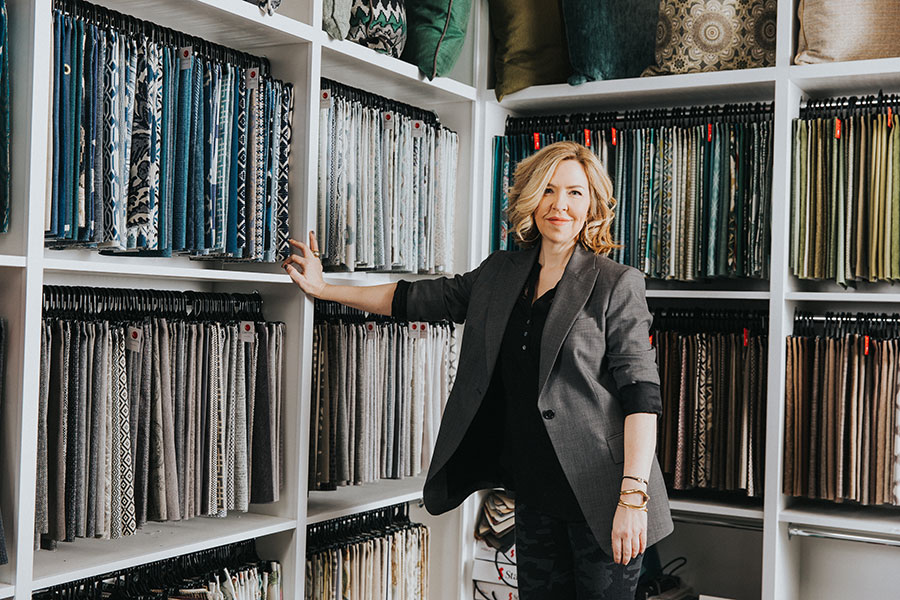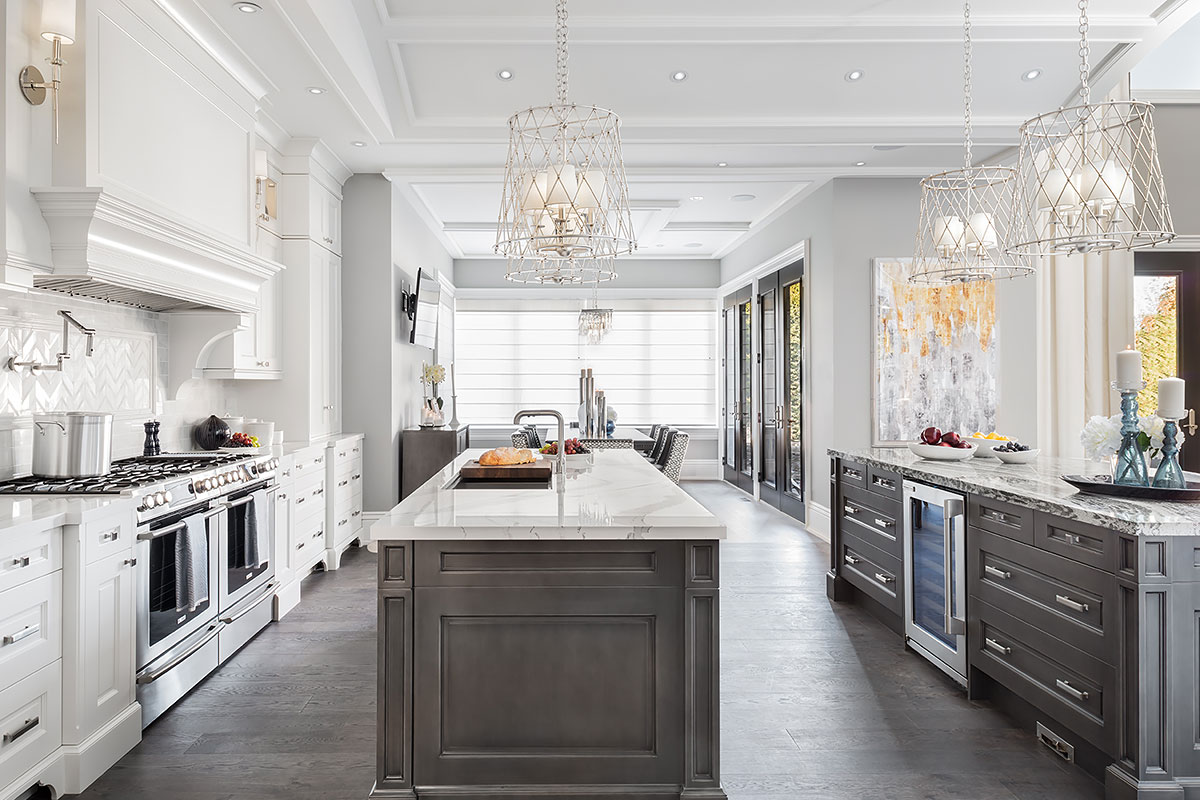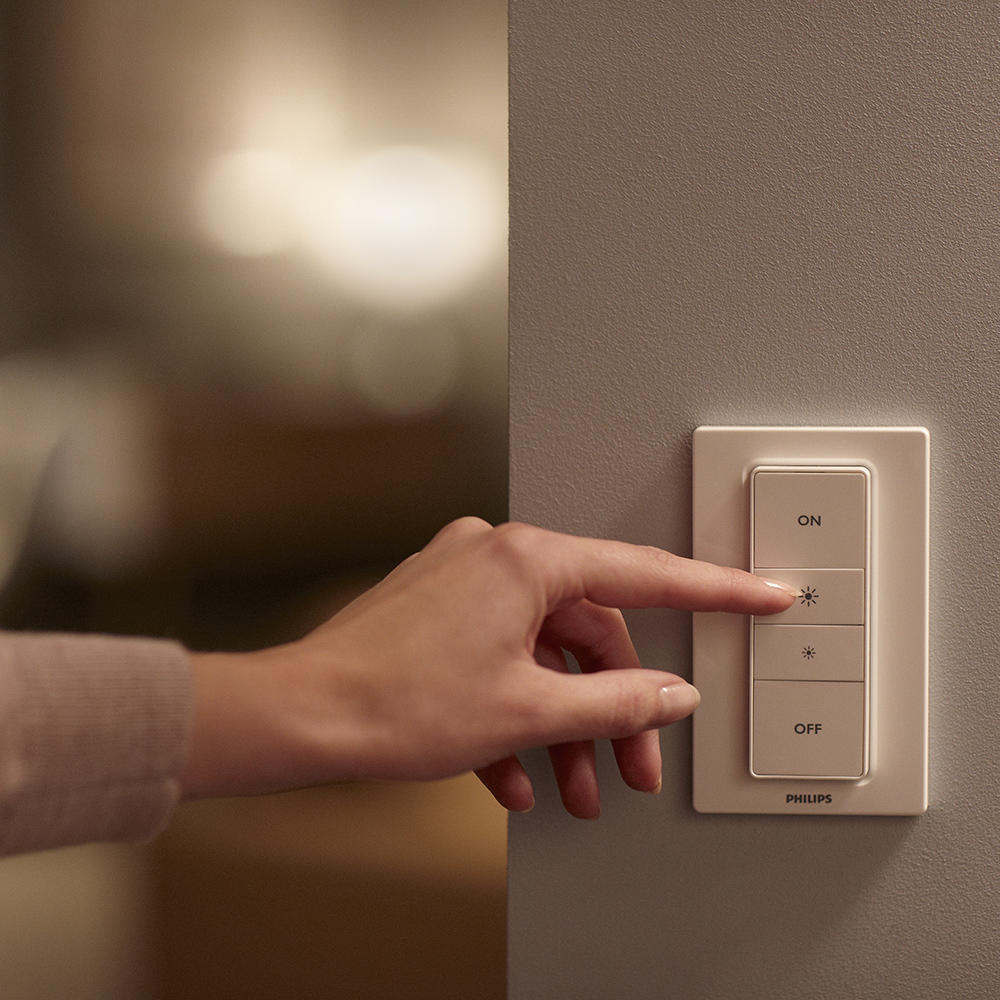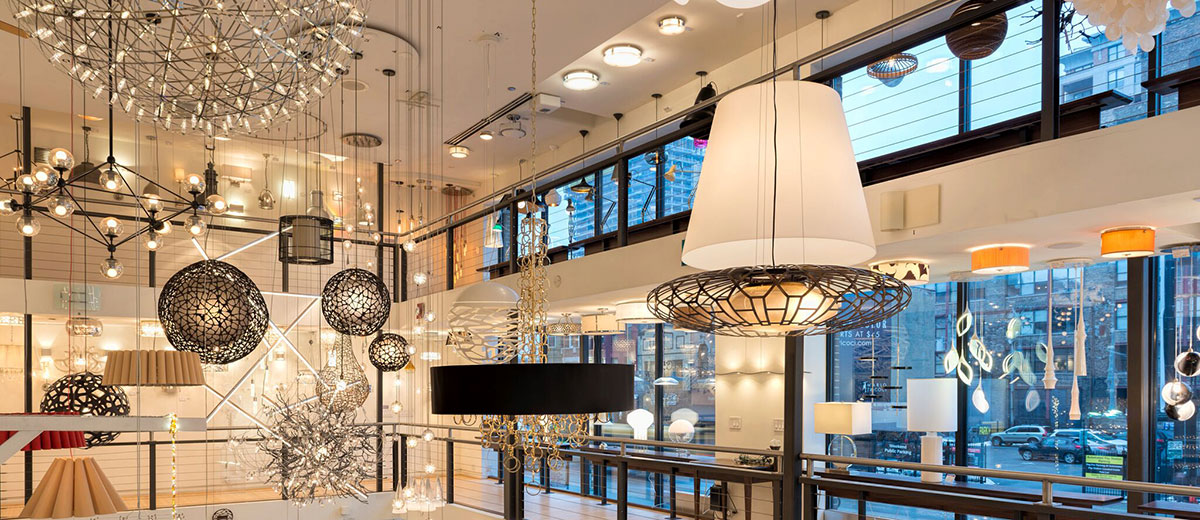
We have a great design studio location, but I have to confess, the lighting isn’t perfect. (Yes, even designers can become used to inefficiencies around them.) While reviewing different lighting options, I thought to myself, there must be lots of people who have great design style but could elevate it with the right lighting. So, I put these tips together.
While some find a single lamp in a room adequate, (it’s not!) others are now seeing the value of properly, layered lighting. If you’re unsure about how much lighting you need, here’s my first tip: The more lighting, the better! You can always turn some off.
Layer Your Lighting


Proper lighting is generally a three-part layering process. Ambient lighting is general lighting that helps you see in a space. Task lighting is directed at an area like a counter in your kitchen to help you see what you’re doing, clearly, and Accent lighting is decorative, used to light an object like a piece of art.
So how do we add the layers? Is there one focal point in your kitchen? Probably not. Whether you’re preparing food for your evening meal, washing dishes or unpacking your groceries, your whole kitchen needs light. A single ceiling fixture in the middle of the room will not be enough.
Recessed lighting is installed throughout the ceiling surface, adding a crisp, even, overhead ambient light. It’s one layer of light that can work in hallways, kitchens and bathrooms as a primary source of lighting but don’t stop there.
Under cabinet lighting in the kitchen helps with details like food prep, that’s task lighting. The light shines down on the counter so you can see what you’re doing. Pendants over islands adds to the layers with function and style. When added in bathrooms, sconces on either side of a mirror help eliminate shadows.
Layered lighting in the dining room can add drama. With recessed ceiling lights, a centered, hanging light fixture for task and ambience, and wall sconces to add accents can make the room look fantastic. It’s not over-kill. Like I said, you can always turn some lights off. To help you with that, my next important rule is…
Dim the lights


As far as I’m concerned dimmer switches are a must-have. They allow you to control the mood in any room and conserve energy. It’s certainly worth the investment.
Showroom lighting can fool you!


www.lightology.com
Have you ever bought lighting from a showroom because it looked great only to get it home and realize it just doesn’t work for your space? Here’s my tip: Bring a measuring tape. Everything looks smaller in large showrooms.
A chandelier that’s either too big or too small for your dining table will look out of place and visually throw the room off balance. Two helpful tools you can use are Lightology’s Chandelier Size Calculator and Wayfair’s Chandelier Size and Placement Guide.
LED Lighting vs Incandescent Light Bulbs


www.illuminexlighting.com
If you haven’t made the switch from incandescent light bulbs to LED lighting, now is the time. LED lighting was once thought to be an expensive alternative that didn’t live up to its supposed benefits. That has changed.
One LED light uses approximately one sixth of the amount of energy of an incandescent bulb, lasts 25 percent longer and is just as bright. There are cooler looking bulbs for laundry rooms and warmer ones, for living rooms, so choose carefully for the right ambience.
It’s not just the right fixture for a room, it’s all about the layers of lighting that elevate a room from good, to amazing.

